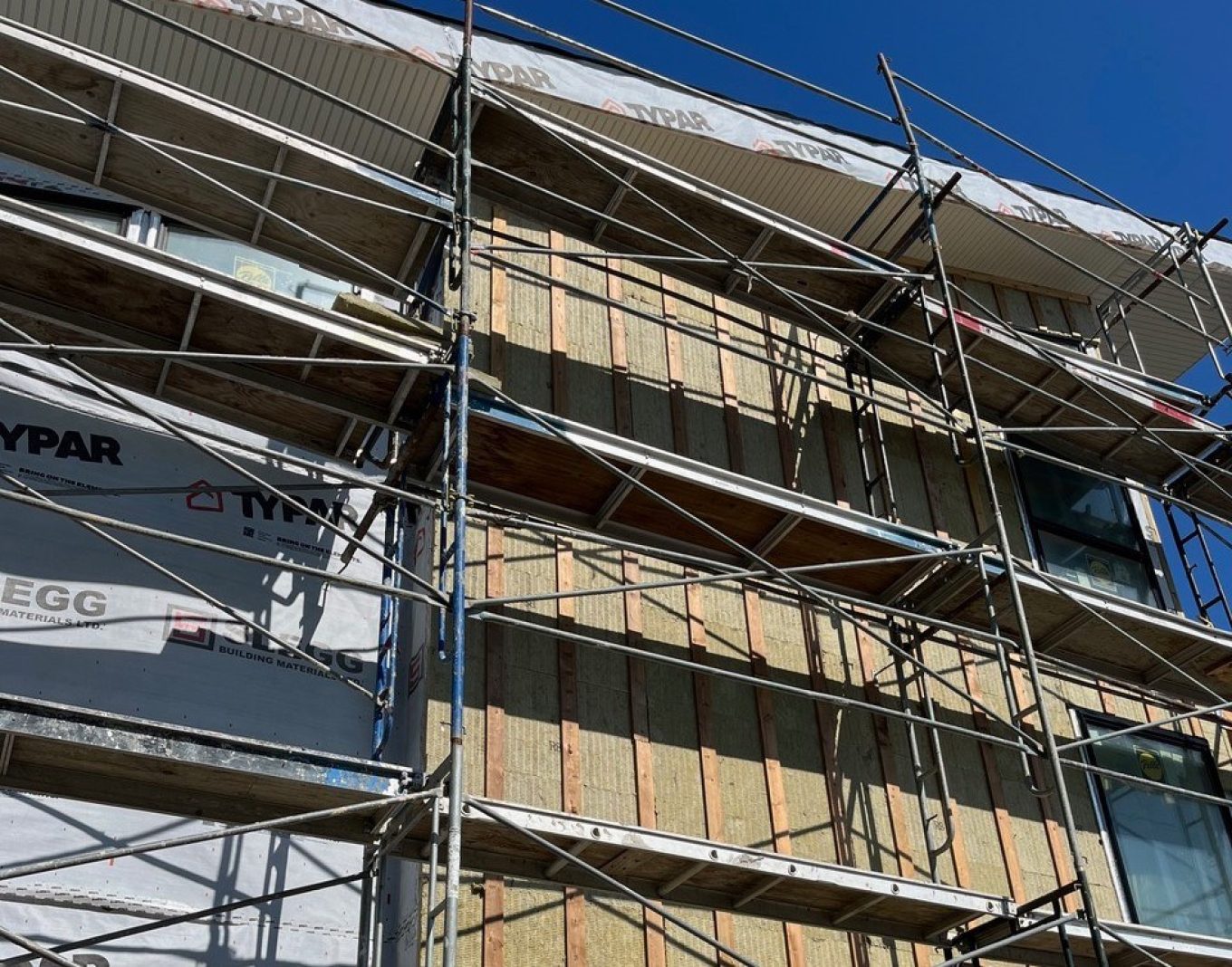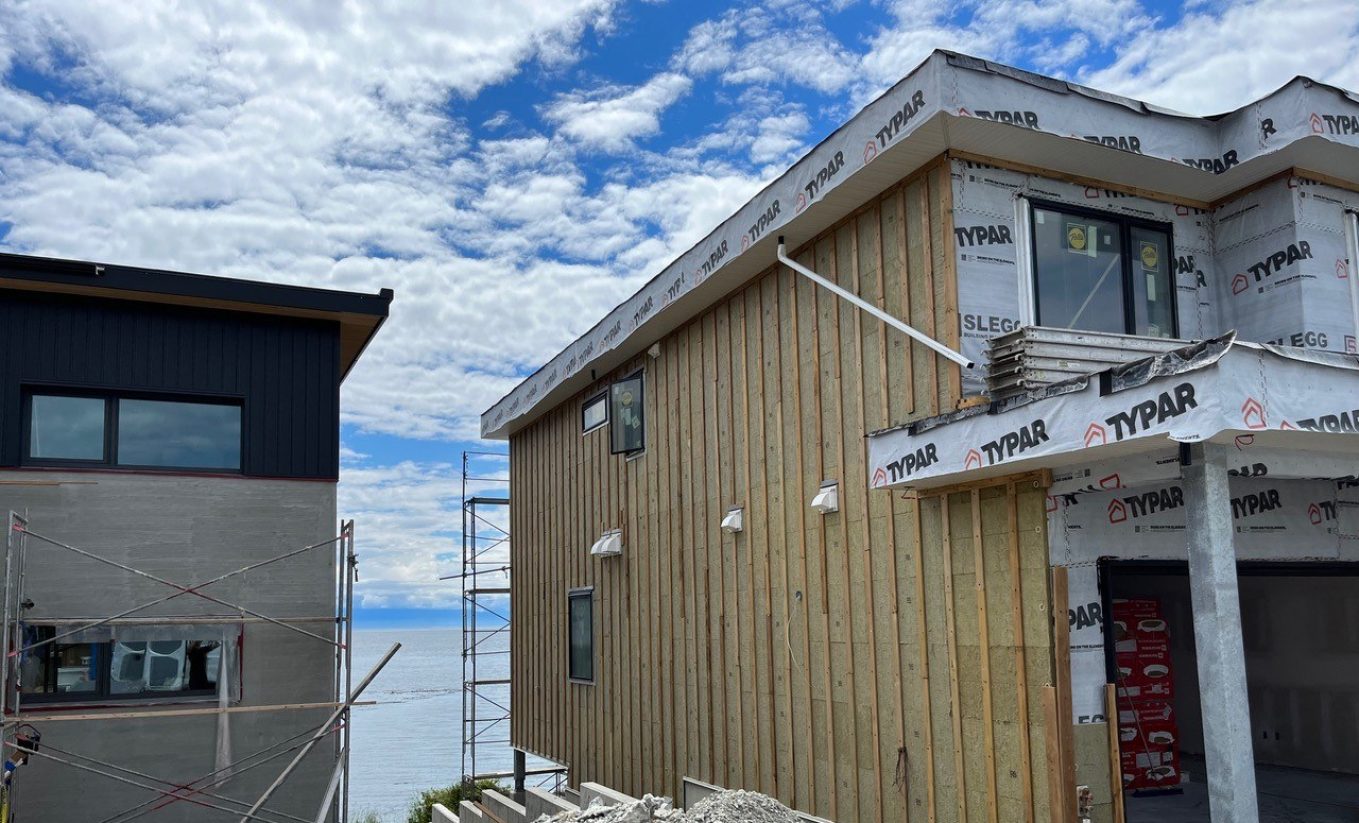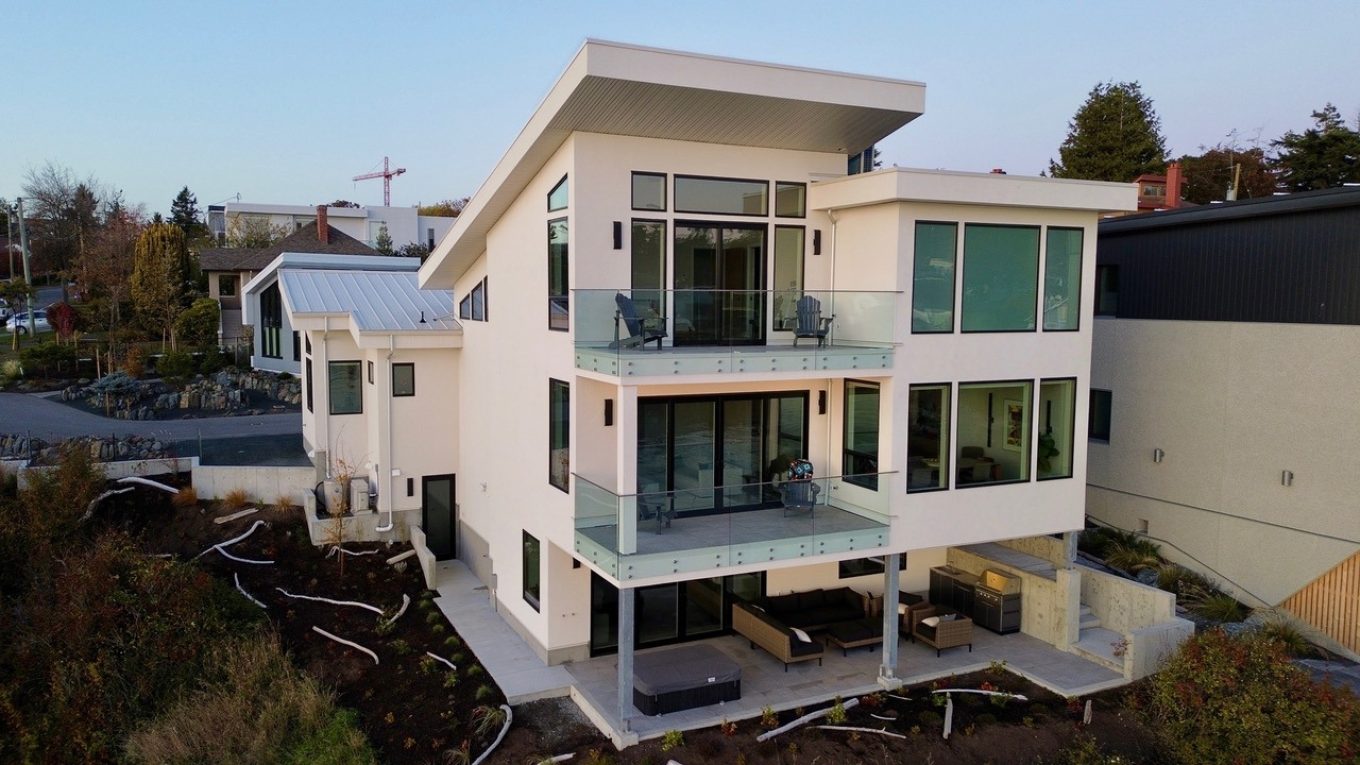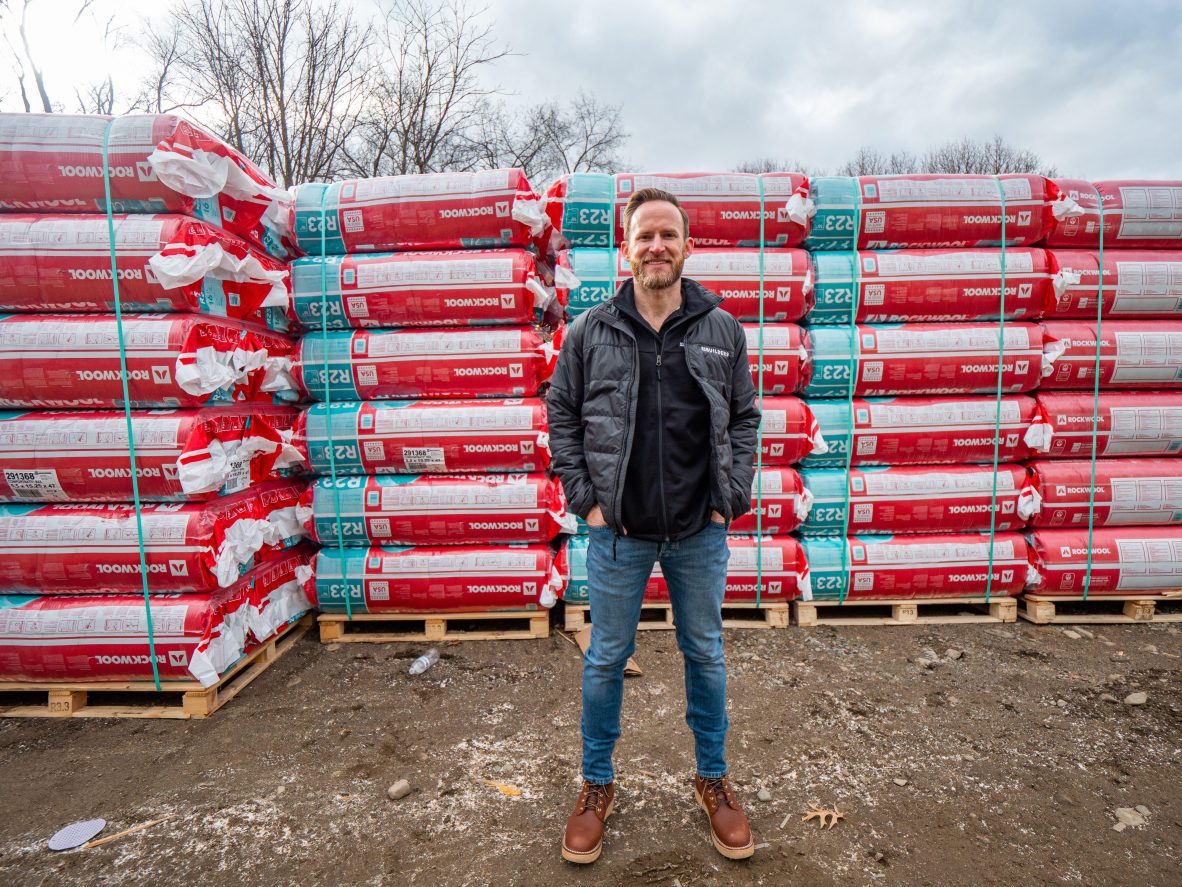Amity Construction, British Columbia
How does a teacher in training, turned mechanic, turned builder become such an advocate for building homes that last? We spoke with Dusty Delain about what it’s like building on Canada’s west coast, why he’s a regular ROCKWOOL insulation user and now a member of our R‑Class program, and more.
MY ROCKWOOL STORY
(1) What was your first experience using stone wool?
We used ROCKWOOL Safe’n’Sound® for the first time about 15 years ago on a project needing sound insulation. It was recommended by our insulation contractor because it would provide good performance with a thinner product than the other batts on the market. We also didn’t want to have to use resilient channels; we designed a staggered wall, and it worked so well. Now it’s all we use in our homes.
(2) How did it compare to what you were expecting?
I can speak from personal experience that it is an effective product for sound proofing. We have two teenage girls who can be loud, so we installed Safe’n’Sound with staggered walls between their bedrooms during construction and cross-room noise was not an issue.
For more information on designing interior walls for improved acoustics, including staggered stud assemblies, check out ROCKWOOL's acoustic wall assemblies technical guide.

(3) What is your "go-to" application with stone wool, and why?
Well, soundproofing, of course. But we also always use it in basements because of its moisture resistant properties. It’s a smart investment, especially in this part of the country where we get so much rain. It’s important to protect the thermal performance of the insulation for the long term and using a product that can’t stand up to moisture just doesn’t make sense.
It’s important to protect the thermal performance of the insulation for the long term.– Dusty Delain, Amity Construction
(4) What's the most unusual application you've ever tried?
We had a client who had converted his garage into a sound studio where he produced music and played electronic instruments. The garage at the time had R12-insulated walls and he needed a speaker box for when he was recording; his neighbors within a block radius could hear him playing bass. We built him a large speaker box that could open, had an air-tight door seal and a thick layer of ROCKWOOL stone wool insulation on the inside. It is another testimony to the diverse things you can use stone wool for.
(5) What's your best advice for builders using stone wool insulation for the first time?
I would say because of the many qualities of the product that are unique to ROCKWOOL insulation, to start building a capacity for the many different applications. In our area the moisture resistance is so important—stone wool retains its R-value even if it’s gotten wet and dries out; it performs without skipping a beat. So, when you’re doing a new build, think about using it everywhere in a home you can.
A lot of the things that go into a high-performance home can’t be seen.– Dusty Delain, Amity Construction
BUILDING TO ADDRESS CLIMATE CHANGE
(6) What do you wish homeowners understood about building homes that last?
A lot of the things that go into a high-performance home can’t be seen; homeowners can’t see where the money is being spent. But a home that lasts longer is better for the environment and interior (occupant) health. We probably need to transition to smaller residences in general. Some of my favorite projects are the smaller homes. If you can reduce your home by 1,000 sq feet and then have a super energy efficient home, that's worth it.
It used to be that awareness of and demand for energy efficiency was only about controlling heating and cooling costs for a home; it wasn’t at all about the current climate challenges we are all facing. But we’ve done a lot of work to educate about building science and advancing skilled trades to make a real difference in all our builds.
A home that lasts longer is better for the environment and interior (occupant) health.– Dusty Delain, Amity Construction
The challenge today is we all want the cleanest energy, we don't want any waste—if it doesn't affect me and my wallet, I'm all for it. But as soon as it starts hitting my wallet, I care. Code changes are important but it’s really going to have to be individual initiative; what things we can do, even if we can start by limiting our usage or wants, that's something every individual should be striving for. There's an effectiveness to it.

WHAT I'VE LEARNED
(7) What was the first house you built and what did you learn?
I was working as a mechanic before I started in construction. I worked with my wife's family's business and started learning on the job as an apprentice; one mode of learning was with rainscreen and capillary breaks. That’s where I got the introduction to building science. My building capacity increased and I started doing renovations after that. My first professional building opportunity was a renovation. I was fortunate to learn from those early opportunities and over time was able to shift to new builds. Soon I was able to start building houses for clients and some other family and myself. I’ve never stopped learning.
Rainscreen and capillary breaks. That's where I got the introduction to building science.– Dusty Delain, Amity Construction
(8) If you were starting your building career over again, what would you change if anything?
I feel truly blessed for my family, occupation, and community; to ask for anything more would be pushing my luck.
(9) If you weren't building homes, what would you be doing?
I was in education. I wanted to be an elementary school teacher. I still feel strongly about the need for quality, accessible education for everyone.
(10) What's next for you?
I really enjoy building custom homes. You have your client’s trust. There are always challenges arising too, but for me, building these homes makes me feel alive and gives a sense of accomplishing something right. I love driving through neighborhoods with Amity homes in them and seeing them being enjoyed. It's a great feeling.

EXPLORE R‑CLASS MEMBER BENEFITS
To join Dusty and a like-minded community of high-performance builders, get access to exclusive content about ROCKWOOL insulation applications, and apply for product rebates and incentives, join the R‑Class today!
